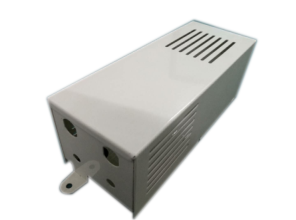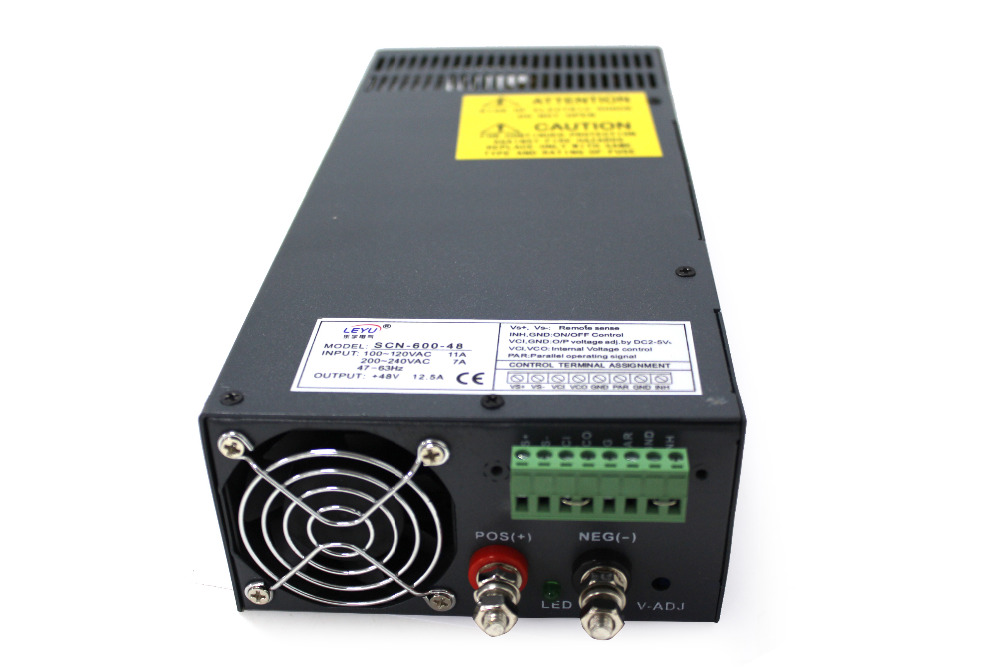(1) Japan JIS B6336-1980 "General Principles of Test Methods for CNC Machine Tools"
1, positioning accuracy
The positioning accuracy is in one direction, and is sequentially positioned from the reference position, and the difference between the actual movement distance (or rotation angle) and the specified movement distance (or rotation angle) at each position. The error is expressed as the maximum difference in each position, and measurements are taken over the full length of the move. Rotary motion is measured at every 30° or at 12 positions in the full rotation range. Take a measurement in the same direction and find the difference between the actual distance and the specified distance.
2, repeatability
Repeat positioning seven times in the same direction at any point to measure the stop position. The error is 1/2 of the maximum difference in readings (  ) Indicates. In principle, it is measured at both ends of the stroke and in the middle position.
) Indicates. In principle, it is measured at both ends of the stroke and in the middle position.
3, deviation
Each position is positioned 7 times in positive and negative directions. The error is expressed as the difference between the average of the positive and negative stop positions. Measured at both ends of the stroke and in the middle position.
4, the minimum setting unit feed deviation
A single minimum setting unit is given continuously in the same direction, and a total of about 20 or more units are moved. The error is expressed as the difference between the distance (or angle) of each adjacent stop position and the minimum setting unit.
5, test conditions
(1) In principle, use rapid feed.
(2) Positioning accuracy. Positioning repeatability and the minimum setting unit positive and negative direction tests are performed separately, and the error takes the maximum value.
(3) Machines with pitch error compensation devices, except for the minimum setting unit, are tested under the conditions using these devices.
(ii) NMTBA 1977 Second Edition of the American Machine Tool Manufacturers Association, Definition and Evaluation Method for Accuracy and Duplication of CNC Machine Tools
(1) Positioning accuracy A (Accuracy of positioning)
The positioning accuracy of a certain point is the difference between the average value of X and the target position at the point and the dispersion of the same position. ![]() 3
3 ![]() Sum. Take the maximum absolute value.
Sum. Take the maximum absolute value.
One-way approach positioning accuracy Au=â–³Xu  3
3  u; two-way approach positioning accuracy Ab = â–³ Xb
u; two-way approach positioning accuracy Ab = â–³ Xb  3
3  b; Unidirectional processing if no direction is specified.
b; Unidirectional processing if no direction is specified.
(2) Zero offset
After determining some points Ab or Au on the axis (or angle), the average value of the two extreme values ​​of A is taken as 0 point of the flat accuracy.
(3) Repeatability
One-way repeatability: Under the same conditions, a given point is approached several times to obtain the dispersion centered on the average position X.
Two-way repeatability: Under the same conditions, the positive and negative directions converge toward a given point multiple times to obtain the dispersion of the center of the average position.
Repeatability formula:
S= 

In the formula: X--data number; S--standard deviation; N--number of data; generally N=7.
(4) Reversal value
When both positive and negative directions approach a given point, the distance between the two averages is obtained.
(5) Accuracy evaluation of machine tool position
In the specified distance BS, AS is the basic value of positioning accuracy. For longer trips, the accuracy tolerance increases by Cs for each additional unit length. The equivalent-tolerance model moves in parallel along the theoretical reference line, and the positioning error curve should be contained within the limits of the template.
The angular position accuracy assessment method is similar to linearity.
(6) Test conditions
The measurement target position is randomly selected. There must be sufficient points within the scope of the work and the order must be close to each point.
For non-standard temperature tests, the effect of temperature should be considered.
Each axis measures and specifies its accuracy and repeatability.
(III) German VDI/DGQ 3441.3:1994 “Statistical Inspection Principles for Machine Tool Accuracy and Position Accuracyâ€
1, the term code and formula
At the target position j, the ith measurement
Positive, negative position difference:  ,
, 
Average position difference:  ,
, 
standard deviation: 

Standard deviation average: 
Estimated approximate standard deviation:




All approximations are  generation
generation 
Dispersion of position: 
Maximum positional dispersion (axial): 
Reverse deviation: 
Reverse deviation (axial):
Maximum: 
average value: 
Total average difference: 
Positional deviation (axis): 
Unreliability of position (positioning accuracy of axis): 
2, the assessment of the accuracy of the machine position of the project
A total of four: P,  ,
,  And U,
And U,  and
and 
3, test conditions
(1) Measure the distance between positions and select randomly.
(2) Axial travel, select at least 10 measurement positions per 2000mm. More than 2000mm, there is at least one position per size unit.
(3) Each measurement position is carried out in a direction parallel to the axis and measured at least five times. Each cycle starts from the same fixed position.
(4) The illustration of the 10 measurement position parameters on the measured axis.
(5) Assessment of Position Unreliability P
In the range of the reference length L, the tolerance difference is Tp. If the measurement length increases by ΔL, the tolerance increases by ΔTp.
(7) Measurement position
The measurement position is performed within the actual working range of the tool. It includes all errors related to the distance L between the axis of the machine tool and the detection axis.
The standard VDI/DGQ adopted in Germany is basically similar to the ISO and NMTBA standards, or more precisely, the ISO standard is similar to the VDI and NMTBA standards. Because the latter two come before the former and are obviously used as the basis for the former. Although there are differences in calculation methods and indicators, the key calculation results, namely positioning accuracy and repeatability, are similar among the three standards. (The two national standards introduced in the article are equivalent to the ISO 230 standard, so there is no separate description of the ISO 230 standard)
The German VDI method is the most complex of the various methods mentioned in the article. It is difficult to clarify some of the indicators in this standard without careful analysis. The “positioning accuracy†of the indicator is not like a single digital expression in the ISO standard, but is divided into four parts: positioning uncertainty (P), positioning divergence (Ps), reverse error (U), and positioning deviation (Pa). .
The closest to the positioning accuracy in the ISO standard is the positioning uncertainty (P) in VDI. Although the calculation process of these two indicators is not the same, the final results are very similar: both are calculated along the axial normal The maximum broadening of the curve, the only difference is the calculation method of the normal distribution curve. The VDI standard combines the two normal curves of two-way measurements, defined as the divergence of orientation (Ps), which is obtained by first averaging and then performing six average standard deviations, and then inverting the error (U). ) Divide by 2 and add each half to the average normal curve (that is, position the divergence).
The description of the “positioning deviation†of the indicator in the VDI is different from the indicator of the same name in the ISO standard. In the ISO standard, it refers to the difference between the target point and the actual point. In the VDI standard, it refers to the corresponding target point along the axial direction. The maximum difference between the average of the actual position of the series.
The VDI axial repeat accuracy is similar to the definition in the ISO standard. It is obtained from the maximum positioning divergence corresponding to the target point plus the reverse error.
The Japanese industrial standard JIS is far simpler than other precision standards and naturally far less accurate than other accuracy standards. JIS B6336 only requires a round trip target point. The maximum positioning deviation between the bidirectional detection target point and its corresponding actual point column is the positioning accuracy.
The accuracy of the CNC machine tool measured by this method gives the impression that it is higher than the ISO standard or the NMTBA standard, with a numerical ratio of 1:2. The repeatability of the JIS standard refers to the maximum dispersion at the target point. This maximum dispersion obtained by 7 bidirectional measurements is divided by 2 and then given the “±†value, ie, the repeatability is expressed.
From the introduction of the various standards above, it can be seen that the same index names represent different meanings in different accuracy standards, and different index names have the same meaning. In addition to the JIS standards, the above four standards are calculated by mathematical statistics after multi-target measurements are performed on the NC axis of the machine tool. The key differences are:
1, the number of target points;
2, measure the number of rounds;
3, from the one-way or two-way approach to the target point (this point is particularly important);
4, the accuracy of indicators and other indicators of the calculation method.
Therefore, the "positioning accuracy" of a manufacturer's machine tool A is marked as 0.004 mm, while on the sample of another manufacturer, the "positioning accuracy" of the same machine tool B is marked as 0.006 mm. From these data, you may naturally think that machine A is more accurate than machine B. However, it is actually possible that the accuracy of machine tool B is higher than that of machine tool A. The problem is how the accuracy of machine tools A and B is defined, respectively.
Therefore, when we talk about the "accuracy" of numerically-controlled machine tools, it is important to understand the definition of standards, indicators, and calculation methods.
Timeplex is one of the leading manufacturers of metal stamping,plastic injection,Heatsink,home appliance products,R/C drones, smart electronic toys, complete the solution for OEM/ODM Products and components ,it's founded in 1989 ,in China.
During the past years ,Timeplex has established strong confidence and goodwill with our customers around the world.

We specialize in the below business for you :
1.Metal stamping parts,heatsink.
2.Plastic Injection Components.
3.Various finished goods assembly.
4.R/C drone and smart electronic toys.
5.OEM/ODM service .

More services we offer:
Besides of Metal Stamping components,Metal Stamping Supplies, we also complete solution for OEM/ODM products & components, offer services of deep drawing services, EMI metal shielding parts,Easy Metal Stamping, heat sink ,plastic molding products for custom, plastic injection components, Metal Stamping Parts, home appliances accessories ,R/C drone and smart electronic toys etc.
Our advanced equipments, professional engineers ,high quality system, enable us to provide high quality with low production cost Based on our strength, passion and capacity, we devote to supply one-stop service to customers.
Metal Stamping Components,Metal Stamping,Custom Metal Stamping,Metal Stamping Tools
Timeplex Industrial Limited , https://www.timeplexhks.com